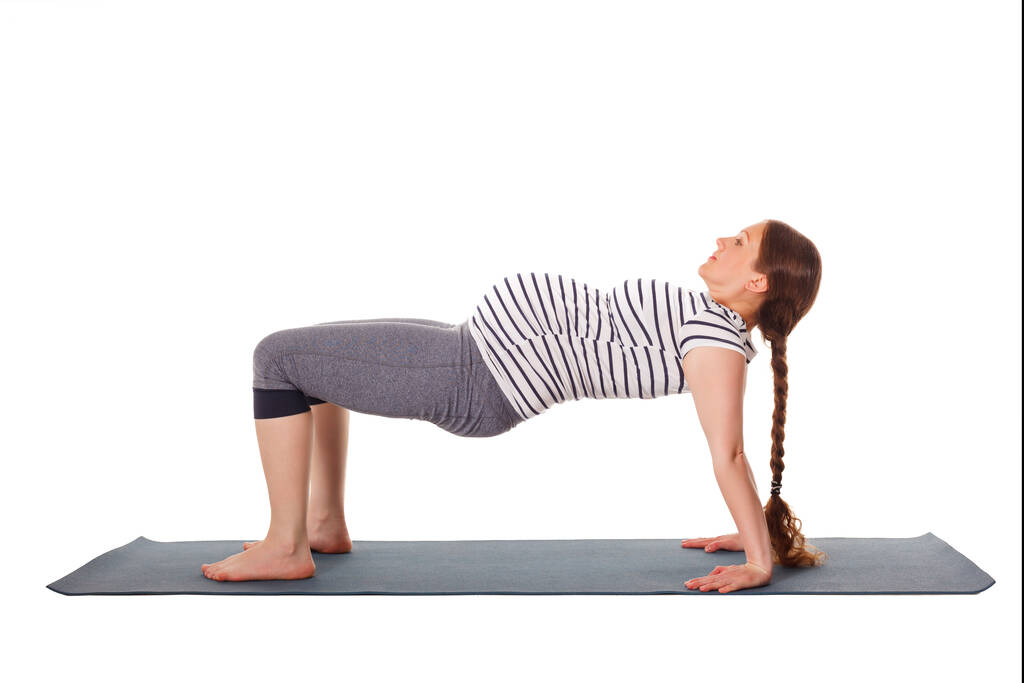Learn how to transition from lying down to standing without straining your back.
How to Transition From Lying Down to Standing Without Straining Your Back
Are you tired of waking up with a sore back every morning? Do you dread the moment when you have to go from lying down to standing, knowing that your back will be screaming in protest? Well, fear no more! In this article, we will explore the secrets to transitioning from lying down to standing without straining your back. So grab a seat (or lie down if you prefer), and let’s dive right in!

Understanding the Mechanics of Your Back
Before we delve into the art of transitioning smoothly from lying down to standing, let’s take a moment to appreciate the wonders of your back. Your back is like a well-oiled machine, with your spine serving as its superstar. Your spine plays a crucial role in movement, providing support and stability to your entire body. So, it’s essential to understand how your spine works to keep it happy and healthy.
Did you know that your spine is made up of 33 individual bones called vertebrae? These vertebrae are stacked on top of each other, forming a flexible and strong column. The spine is divided into different regions, each with its own unique characteristics. The cervical spine, located in your neck, consists of seven vertebrae, while the thoracic spine, in your upper back, has twelve. The lumbar spine, in your lower back, consists of five vertebrae, and the sacrum and coccyx at the base of your spine are fused bones.
The Role of the Spine in Movement
Imagine your spine as a flexible chain of bones, designed to allow movement while maintaining stability. From the neck to the lower back, your spine has natural curves that distribute the weight evenly, reducing strain on individual segments. These curves act as shock absorbers, cushioning the impact of daily activities like walking, jumping, and yes, even transitioning from lying down to standing.
Let’s talk about those curves in more detail. The cervical and lumbar regions of your spine have inward curves, known as lordosis, while the thoracic region has an outward curve called kyphosis. These curves help to maintain balance and alignment, allowing your spine to withstand various forces and movements without sustaining injuries.
How Muscles Support Your Back
Your spine isn’t alone in shouldering the responsibility of keeping your back pain-free. Your muscles play a vital role too! Strong and flexible muscles provide additional support to your spine, ensuring that it stays aligned and functions smoothly. So, it’s time to show some love to those muscles and give them the attention they deserve.
There are several muscle groups that contribute to the stability and movement of your back. The erector spinae muscles, located on either side of your spine, help to maintain an upright posture and assist in bending and twisting motions. The deep core muscles, including the transverse abdominis and multifidus, provide stability to your spine and pelvis, acting like a corset around your lower back. Additionally, the gluteal muscles in your buttocks and the hip flexors in your hips play a role in maintaining proper alignment and supporting your back during various activities.
It’s important to keep these muscles strong and flexible through regular exercise and stretching. Engaging in activities like yoga, Pilates, and strength training can help improve the endurance and function of these muscles, reducing the risk of back pain and injury.
The Importance of Proper Body Alignment
Now that you understand the inner workings of your back, it’s time to focus on something equally crucial: proper body alignment. Maintaining good posture is key to preventing back strain and discomfort. So, let’s straighten up and dive deep into the principles of good posture!
Proper body alignment is not just about looking poised and confident; it has a significant impact on your overall well-being. When your body is aligned correctly, it functions optimally, allowing you to move with ease and efficiency. This alignment starts with your spine, which acts as the central support system for your entire body.
The Principles of Good Posture
You’ve probably heard it before, but it bears repeating – good posture is the foundation of a healthy back. Standing tall, with your shoulders back and relaxed, promotes proper alignment of your spine. It reduces the stress on your back, allowing your muscles and joints to work harmoniously.
But good posture is not just about standing up straight; it extends to all aspects of your daily life. Whether you’re sitting at a desk, lifting heavy objects, or even sleeping, maintaining proper body alignment is crucial. When you sit, for example, it’s important to keep your back straight, your feet flat on the floor, and your shoulders relaxed. This alignment ensures that your spine is in its natural, neutral position, minimizing strain on the muscles and ligaments.
Misalignment and Back Strain
When you’re slouched or hunched over, your back pays the price. Misalignment places unnecessary pressure on your vertebrae, resulting in strain and discomfort. It’s no wonder your back puts up a fuss when you try transitioning from lying down to standing like a tangled pretzel. But fear not, dear reader – we have some tips to help you smooth out those kinks and make your transition a breeze!
One common cause of misalignment is the sedentary lifestyle that many of us lead. Spending long hours sitting at a desk or in front of a screen can wreak havoc on our posture. The lack of movement and the repetitive strain on certain muscles can lead to imbalances and misalignments. Incorporating regular breaks to stretch and move throughout the day can help counteract these effects and promote better alignment.
Another factor that contributes to misalignment is weak core muscles. Your core muscles, including your abdominal and back muscles, play a crucial role in supporting your spine and maintaining proper alignment. When these muscles are weak, they are unable to provide adequate support, leading to postural imbalances. Engaging in core-strengthening exercises, such as planks and Pilates, can help strengthen these muscles and improve your overall alignment.
It’s important to note that everyone’s body is unique, and what works for one person may not work for another. If you’re experiencing persistent back pain or have concerns about your posture, it’s always a good idea to consult with a healthcare professional or a qualified physical therapist. They can assess your specific needs and provide personalized recommendations to help you achieve and maintain proper body alignment.
Steps to Transition from Lying Down to Standing
It’s time to get down to business and unravel the mystery of transitioning from lying down to standing without straining your back. We’ve broken it down into three simple steps that will have you up and about in no time!
Starting Position: Lying Down
Lie flat on your back on a firm surface, like a mattress or yoga mat. Bend your knees, keeping your feet flat on the ground. This relaxed starting position helps position your spine in a neutral alignment, preparing it for the journey ahead.
As you lie there, take a moment to appreciate the feeling of your body sinking into the support beneath you. Notice the gentle rise and fall of your chest with each breath, as if the rhythm of your breath is harmonizing with the stillness of the room. Allow any tension in your body to melt away, surrendering to the comfort of the present moment.
Imagine yourself as a seed, nestled in the rich soil of the earth. Just as a seed needs time to gather energy and prepare for growth, your body is taking this time to gather strength and prepare for the transition from lying down to standing. Feel the earth beneath you, grounding and supporting you, as you gather the energy needed for the next phase.
The Intermediate Steps: Rolling and Rising
Now that you’re in the starting position, it’s time to roll and rise! Begin by rolling onto your side, keeping your knees together. Use your forearm as support, pushing yourself gently onto your side. Take a moment to collect yourself and feel the gentle stretch in your back. Once you’re ready, engage your core and push through your arm to rise from the side-lying position to a seated one. Congratulations, you’ve conquered the middle phase!
As you roll onto your side, notice the subtle shift in your body’s weight distribution. Feel the muscles in your abdomen and back engage, working together to support your movement. Imagine yourself gracefully gliding through water, the fluidity of your motion mirroring the ease with which you navigate this transition.
As you rise from the side-lying position to a seated one, notice the strength in your arms and core. Feel the power within you as you push through your arm, propelling yourself upward. You are like a phoenix rising from the ashes, emerging with renewed energy and purpose.
The Final Step: Standing Up
Now for the grand finale – the transition from seated to standing! Place your feet firmly on the ground, shoulder-width apart. Lean forward slightly, placing your hands on your thighs. Engage your leg muscles, pressing through your heels as you rise. Slowly straighten your back, feeling the stretch along your spine. And voila! You’re standing tall, without a hint of strain on your beloved back.
As you stand up, visualize roots extending from the soles of your feet, anchoring you to the earth. Feel the stability and strength that comes from this connection. Imagine yourself as a majestic tree, rooted firmly in the ground, reaching towards the sky with grace and poise.
Take a moment to appreciate the sensation of standing upright. Notice how your body feels aligned and balanced, as if all the pieces have come together in perfect harmony. Feel the energy coursing through your veins, invigorating every cell of your being. You have transitioned from lying down to standing, not just physically, but also symbolically – a metaphor for the resilience and adaptability that resides within you.
Tips to Prevent Back Strain
We’ve laid out the steps, but we’re not quite done yet! Here are some additional tips to help you transition smoothly and prevent back strain in the long run:

Strengthening Exercises for Your Back
Take some time each day to strengthen your back muscles. Simple exercises like back extensions, planks, and bridges can work wonders in providing stability and support to your spine. Remember, a strong back is a happy back!
The Role of Flexibility in Back Health
Flexibility is just as crucial as strength when it comes to maintaining a healthy back. Incorporate stretching exercises into your routine to improve flexibility and release tension in your muscles. Your back will thank you!
Common Mistakes and How to Avoid Them
Even with the best intentions, we all make mistakes. Let’s uncover some common blunders and learn how to sidestep them on our journey to a pain-free back.
Rushing the Process
Patience is key when it comes to transitioning from lying down to standing without straining your back. Rushing the process can lead to poor alignment and increased strain on your back. Take your time, listen to your body, and go at your own pace.
Ignoring Pain Signals
Our bodies are remarkable in their ability to communicate with us. When you feel pain or discomfort during the transitioning process, pay attention! Pain signals are your body’s way of telling you that something is amiss. If you experience pain, reassess your technique and seek guidance from a healthcare professional if needed.
And there you have it – a playful guide to transitioning from lying down to standing without straining your back. Take these tips to heart, and soon, you’ll be gracefully moving from the horizontal to the vertical position, bid adieu to back strain, and embrace a new day with a spring in your step!



